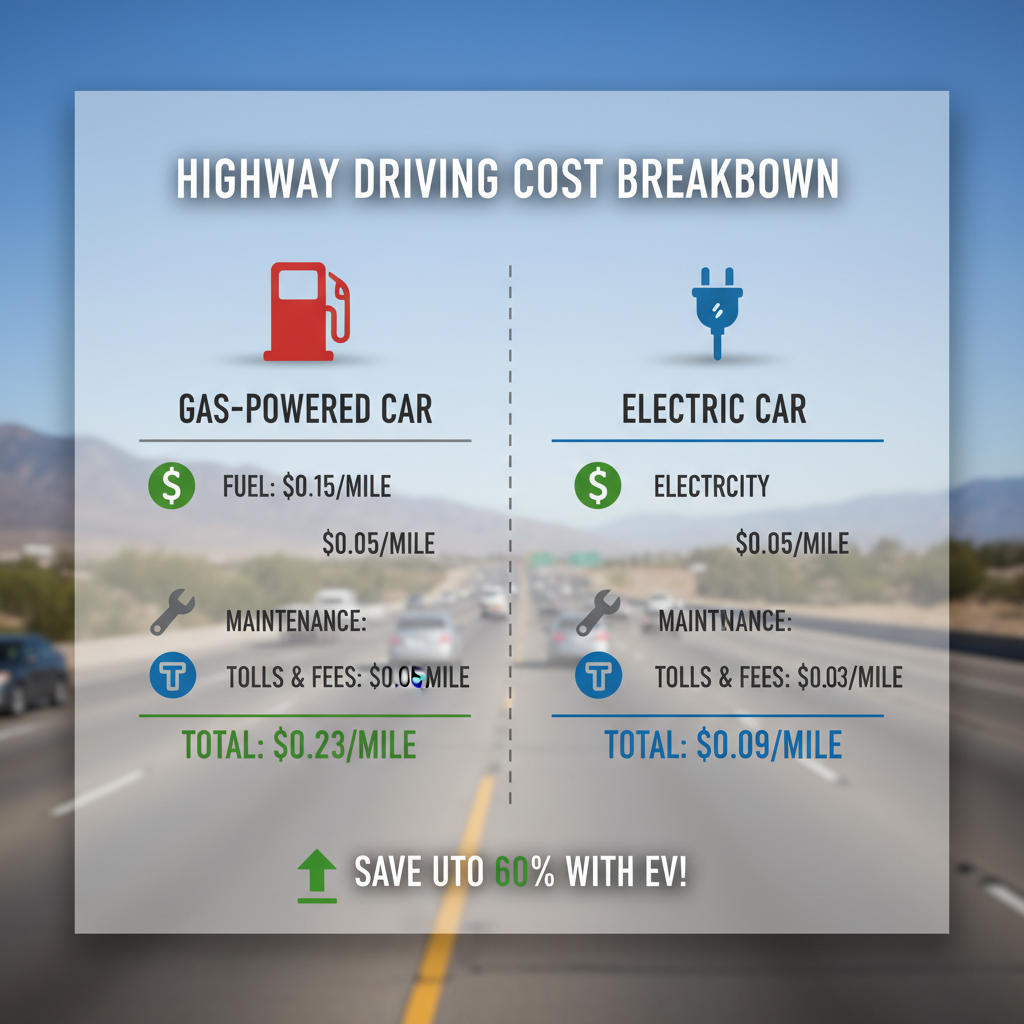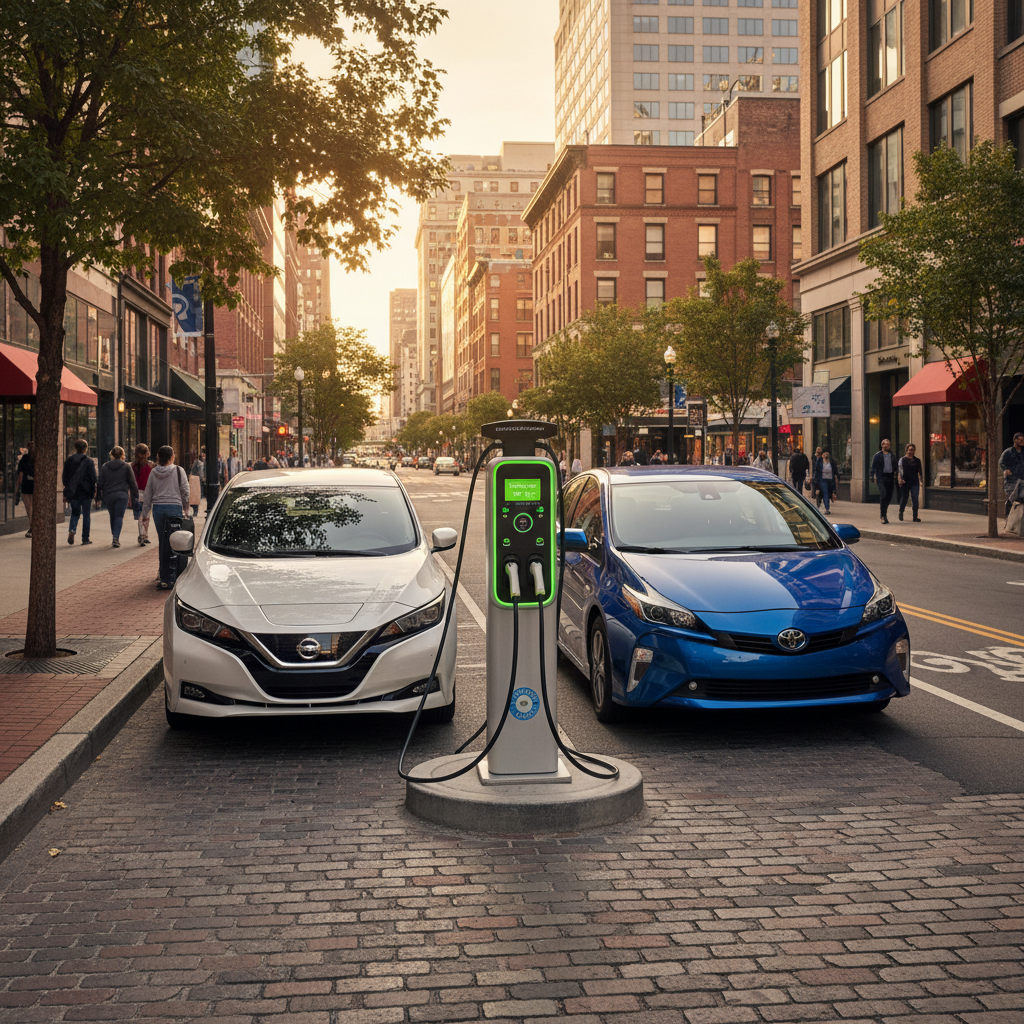Total Cost Showdown: Plug-In Hybrid vs Full Electric—Which Saves You More in 2025?
Thinking an electric car is the cheapest way to drive in 2025? Not so fast. The world of EVs and plug-in hybrids has changed fast—and so have the costs. Today, your smartest financial move depends on how you drive, what you can install at home, and which models you choose. Here’s the data-driven reality: sometimes plug-in hybrids win, while in other scenarios, a full EV crushes the numbers. Make the wrong bet, and you could leave thousands on the table over 5–10 years.
Contents
Data Dive: 2025’s Real-World TCO for Plug-In Hybrid vs Full EV
Forget guesses—let’s break down the total cost of ownership (TCO) by looking at real 2025 numbers, including purchase price, incentives, fuel/electricity, maintenance, and resale value. We’ll use top-selling models to show where the dollars really go.
Scenario 1: Typical Suburban Commute (25 miles/day, Home Charging Possible)
Model Comparison:

- 2025 Toyota RAV4 Prime (Plug-in Hybrid): MSRP $44,500, federal tax credit up to $7,500 (some local incentives apply), electric-only range: ~42 miles.
- 2025 Tesla Model Y Long Range (Full EV): MSRP $47,990, federal tax credit $7,500, local rebates possible, range: 330 miles (EPA).
Ownership cost breakdown over 5 years, 12,000 miles/year (assuming home charging at $0.13/kWh, gas at $3.50/gallon):
| RAV4 Prime | Tesla Model Y | |
|---|---|---|
| Net Purchase Price (after Fed Credit) | $37,000 | $40,490 |
| Fuel/Electricity (5 yrs) | $2,000 (mostly electric) | $1,300 |
| Maintenance/Repairs (5 yrs) | $1,000 | $700 |
| Depreciation (est.) | $13,000 | $15,000 |
| Total 5-Year Cost | $53,000 | $57,490 |
With predictable short commutes and home charging, the plug-in hybrid (when used mostly electric) can be nearly as cheap—or even cheaper—than a full EV, especially if local incentives favor PHEVs[2][3].
Scenario 2: Heavy Highway Use, No Home Charging (20,000+ miles/year)
- 2025 Hyundai Tucson Plug-in Hybrid: MSRP $39,800, federal credit $7,500, electric range: 33 miles.
- 2025 Ford Mustang Mach-E Select (Full EV): MSRP $44,795, federal credit $7,500, range: 250 miles.
Assume most driving is on gas for the PHEV and public charging for the EV ($0.42/kWh average public rate):
| Tucson PHEV | Mach-E | |
|---|---|---|
| Net Purchase Price | $32,300 | $37,295 |
| Fuel/Electricity (5 yrs) | $6,500 | $5,500 |
| Maintenance/Repairs (5 yrs) | $1,200 | $800 |
| Depreciation | $12,000 | $13,800 |
| Total 5-Year Cost | $52,000 | $57,395 |
High-mileage drivers without reliable home charging may not see the full benefit of EVs, especially where public charging is expensive. Plug-in hybrids let you avoid public charger markups and gas station detours, keeping costs surprisingly close—or lower—in this scenario[2][3].

Scenario 3: City Apartment, No Home Charging, Short Trips Only
- 2025 Honda CR-V Hybrid: Not plug-in, but serves as a reference—MSRP $33,000, no plug-in charging needed.
- 2025 Nissan Leaf S (Full EV): MSRP $28,140, federal credit $7,500, range: 149 miles.
With limited access to home charging and mostly short urban trips, a full EV like the Leaf can be the most cost-efficient if you live near public chargers with reasonable rates.
Ownership (5 years, ~8,000 miles/year):
- Nissan Leaf: Total cost ~$40,933 (after incentives, including depreciation, maintenance, electricity, taxes, insurance)[3]
- CR-V Hybrid: Total cost ~$43,000 (no incentives, higher gas/maintenance)[1]
Even without home charging, the EV wins on TCO if charging rates are moderate and incentives are available.
Current TCO Wildcards for 2025: What Skews the Math?
- Incentives: Many federal and state programs still offer $7,500 off for both EVs and PHEVs, but check eligibility—some brands/models may phase out or have limits.
- Resale Value: EVs see rapid depreciation (especially in non-Tesla brands), but some PHEVs hold value better, especially those with Toyota and Honda badges.
- Electricity vs Gas Prices: Home charging rates average $0.13/kWh, but public fast charging can cost 2–3x more. Gas prices remain volatile, with U.S. average around $3.50/gallon[1][3].
- Maintenance: Full EVs have the lowest routine service (no oil changes, less brake wear), but real-world battery replacement risk remains a long-term unknown. PHEVs save on brakes and engine wear, but have twice the drivetrain complexity[2].
When Does Each Win? Quick Rules of Thumb
- Go Full Electric If… You can charge at home, drive mostly short distances, and want the lowest running costs—plus you benefit from all available incentives, especially on Tesla, Chevy, or Nissan models.
- Pick Plug-In Hybrid If… You can’t charge at home, have a long/highway commute, travel where charging is scarce (or expensive), or need ultimate flexibility with zero range anxiety.
- Double-Check Your State’s Incentives: Some states (CA, CO, NJ) offer additional $2k–$5k rebates on top of federal deals, shifting the TCO balance.
Action Steps: Secure the Best 5–10 Year Deal
- Calculate Your Real-World Costs: Use a TCO calculator with your mileage, home charging access, and model preferences. (Many automakers and sites like GreenCars have updated calculators for 2025.)
- Compare Dealer Offers: EV and PHEV incentives change monthly—ask for out-the-door quotes with all rebates applied.
- Check Charging Network Coverage: If you don’t have a home charger, map your route for public network reliability and pricing (especially if considering a full EV).
- Factor in Insurance and Fees: Some states now charge extra EV registration fees, which can eat into your savings, especially for short-term ownership[3].
- Move Fast: Many 2025 incentives have production limits and may phase out mid-year. Early adopters get the best deals—wait too long, and you could lose thousands in rebates.
The Bottom Line
No single winner for everyone. In 2025, plug-in hybrids can be the financial champion for mixed drivers and those without easy charging, while full electrics dominate in predictable, home-charging scenarios. Study your needs, seize incentives, and don’t wait—inventory and rebates change fast, and the biggest TCO wins go to those who act early.

Ready to Crunch Your Numbers?
Don’t leave money on the table—run your commute and local incentives through a TCO calculator now, or check with local dealers for 2025 offers. Early action means bigger savings and more choice. The smartest drivers in 2025 will lock in their deal before the crowd catches on.

